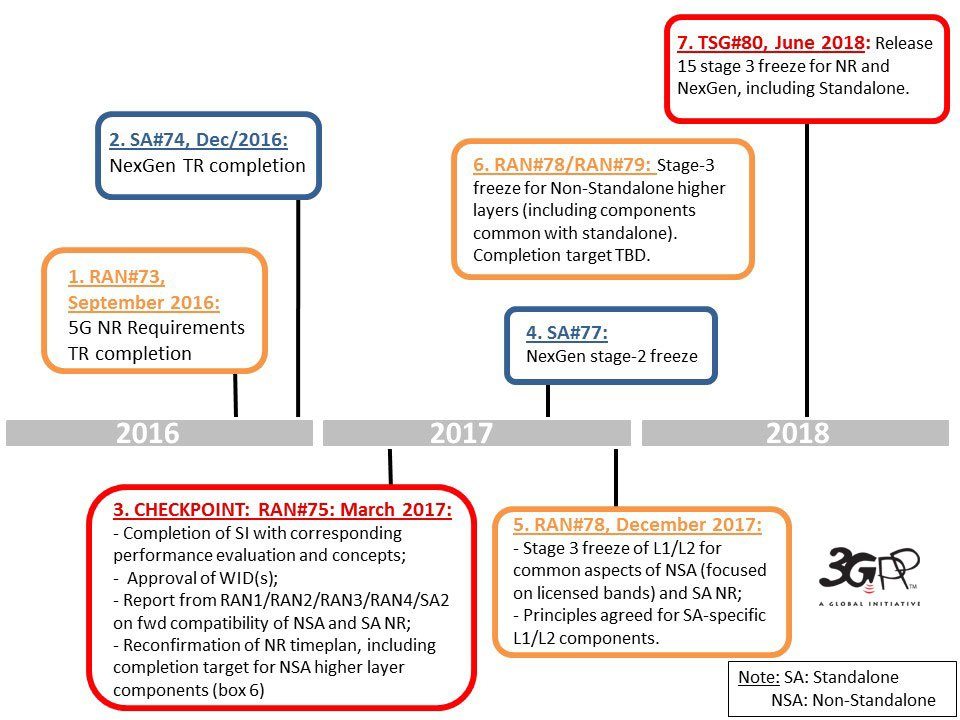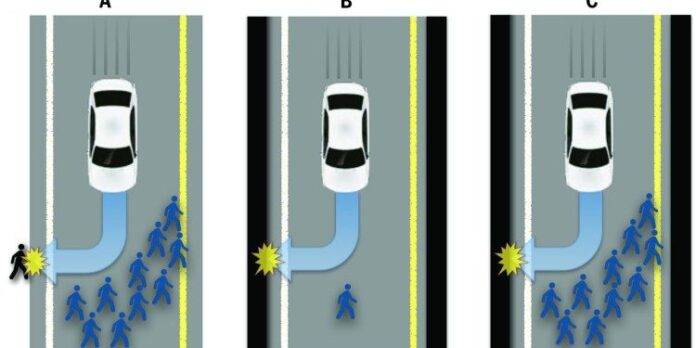Regulators and self-driving car manufacturers are facing a moral dilemma: should self-driving cars save passengers or pedestrians when they crash? A new study reveals how end users feel about the issue.
Self-driving cars are coming, bringing claimed advantages such as more efficient traffic management, reduced pollution and fewer accidents. However all accidents cannot be avoided and autonomous vehicles will have to decide the schematics of those accidents and who might be injured in those incidents: passengers or pedestrians. This is a moral dilemma that needs to be programmed and resolved in self-driving cars.
New research by the University of California, published in Science magazine, asked whether self interest or the public good would predominate when it becomes possible to program decision making based on moral principles into machines. The study, “The social dilemma of autonomous vehicles,” found even though participants approve of self-driving cars that might sacrifice passengers to save others, they would rather not ride in such vehicles. Neither would they approve regulations mandating self-sacrifice.
“Defining the algorithms that will help AVs make these moral decisions is a formidable challenge. We found that participants in six Amazon Mechanical Turk studies approved of utilitarian AVs (that is, AVs that sacrifice their passengers for the greater good) and would like others to buy them, but they would themselves prefer to ride in AVs that protect their passengers at all costs,” the study authors said.
A moral dilemma for regulators and manufacturers
Three potentially incompatible objectives will have to be met by manufacturers and regulators: being consistent; not causing public outrage; and not discouraging buyers.
“To align moral algorithms with human values, we must start a collective discussion about the ethics of AVs – that is, the moral algorithms that we are willing to accept as citizens and to be subjected to as car owners,” the report noted.
As a way of initiating this discussion, the research authors conducted six online surveys with a total of 1,928 participants between June and November 2015, whereby participants were presented with various moral dilemmas. The results were not clear-cut and varied depending on the moral dilemma in question. They showed that overall while participants praised a utilitarian approach, they would not want to buy a self-driving car programmed that way for themselves.
In one study, 76% of participants thought it would be more moral for self-driving cars to sacrifice one passenger rather than kill 10 pedestrians. They also favored a utilitarian approach for AVs, but did not believe AVs would be programmed in that way and were therefore expressed little concern. Another study showed participants did not think self-driving cars should sacrifice their passenger when only one pedestrian could be saved. Their approval to sacrifice the passenger increased however with the number of lives that could be saved. A third study found participants were less likely to purchase a self-driving car that would sacrifice them and their passengers.
“Accordingly, if both self-protective and utilitarian AVs were allowed on the market, few people would be willing to ride in utilitarian AVs, even though they would prefer others to do so,” the authors said. “Regulation may provide a solution to this problem, but regulators will be faced with two difficulties: First, most people seem to disapprove of a regulation that would enforce utilitarian AVs. Second – and a more serious problem – our results suggest that such regulation could substantially delay the adoption of AVs, which means that the lives saved by making AVs utilitarian may be outnumbered by the deaths caused by delaying the adoption of AVs altogether. Thus, carmakers and regulators alike should be considering solutions to these obstacles.”
IIoT News Recap: 3GPP on track with 5G, completes NB-IoT standardization; PSA Group selects TomTom for connected fleet management services; Wisekey and SAP partner on IoT edge security; Resin raises $9 million to accelerate growth of IoT devops platform; Today’s forecast: Smart traffic management

Standards: 3GPP on track with 5G, completes NB-IoT standardization
The 3GPP announced its Technical Specifications Groups has agreed on a detailed work plan for the first release of 5G specifications, going under the name Release-15.
“We now have a more concrete plan to guide the studies in the working groups and to put us in the position to address both short-term and long-term opportunities of 5G,” said Dino Flore, chairman of 3GPP TSG RAN. Keeping busy, the 3GPP also announced the standardization of narrowband “internet of things” has been completed.
“It took us only nine months to standardize the new technology after the study phase. Once again 3GPP demonstrated the ability to quickly respond to the emerging market needs,” said Flore.
Connected car: PSA Group selects TomTom for connected fleet management services
PSA Group is to make TomTom’s Webfleet management solution available to all connected Peugeot, Citroën and DS fleet vehicles. The service will be offered in France, Spain, Belgium and the Netherlands in the next quarter.
“Our ambition is to provide customers with fully connected vehicle fleets as part of our ‘Connect Fleet Management’ program as well as a value-added service from market-leading partners. This innovative proposal allows customers to select services that best fit their company’s needs, helping to save time and money with an easy solution designed to significantly reduce the total cost of ownership. Collaborations like with TomTom Telematics enable us to provide a top-quality reliable service throughout Europe. In this way, PSA Group is furthering its strategy as a mobility provider,” said Brigitte Courtehoux, head of the Connected Services and New Mobility Solutions business unit of PSA Group. TomTom’s Webfleet platform includes digital maps, TomTom’s navigation software “NavKit” and its live Traffic service.
IoT security: Wisekey and SAP partner on IoT edge security
Cybersecurity company Wisekey announced it has partnered with SAP to help secure IoT edge devices.
“Securing data communications from edge devices to the SAP HANA Cloud Platform for the IoT and SAP solutions for the IoT is a prerequisite for any bidirectional enterprise IoT use case,” said Gil Perez, SVP for digital assets and IoT, and GM IoT security at SAP. “By working with WiseKey, we are continuing to offer our customers options for ensuring the validity and scalability of sensor data powering SAP IoT platform and solutions.”
Today’s startup: Resin raises $9 million to accelerate growth of IoT devops platform
Seattle-based IoT development operations startup Resin.io secured $9 million in funding in a round led by DFJ, GE Ventures, Ericsson and Aspect Ventures. Resin.io said it will use the funding to “expand the company’s product footprint, grow its open source community, and broaden its global reach through new strategic partnerships and channels.”
Commenting on the round, Diomedes Kastanis, VP and head of technology and software solutions at Ericsson said: “In a world of end-point liberation, software becomes the means of innovation and where billions of connected devices perform increasingly complex tasks, traditional over-the-air update approaches are simply not enough. We are thrilled to support Resin.io as it helps transform entire industries with the ability to safely deploy new software containers whenever and wherever is necessary.”
Today’s forecast: Smart traffic management to save 4.2 billion man-hours annually by 2021
Analyst firm Juniper Research expects smart traffic management and smart parking initiatives to save 4.2 billion man-hours annually by 2021, which is equivalent to nearly an entire working day per year, per city driver. Juniper Research also forecasts 2 million smart parking spaces will be installed by 2021.
“Facilitating the movement of citizens within urban agglomerations via transport networks is fundamental to a city’s economic growth,” said Steffen Sorrell, the research author. “Congestion reduces businesses’ competitiveness, and contributes to so-called brain-drain.”

